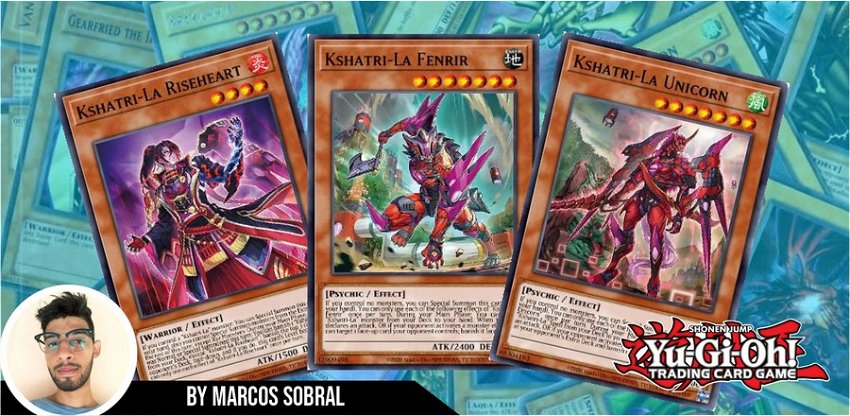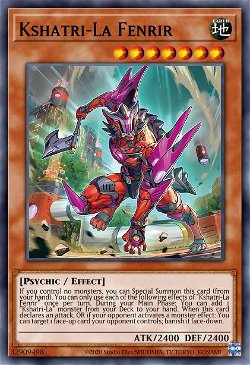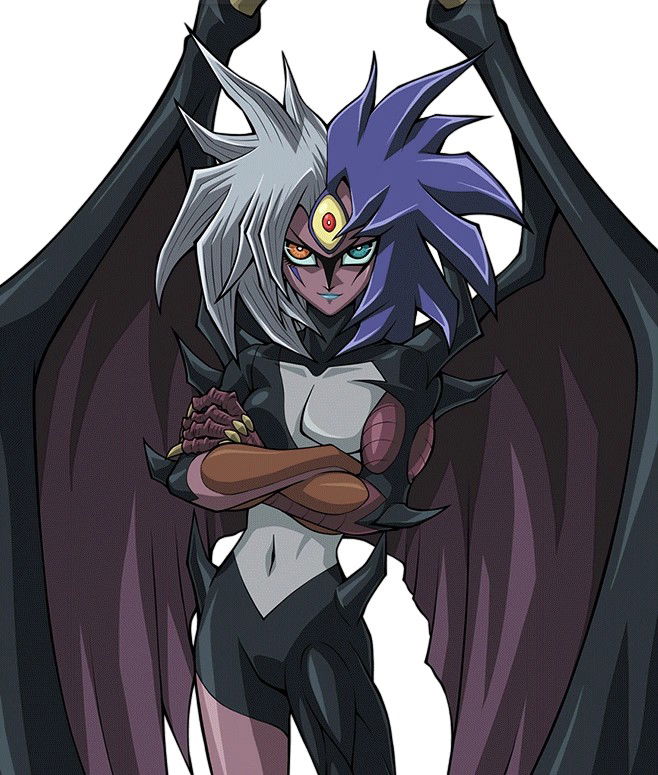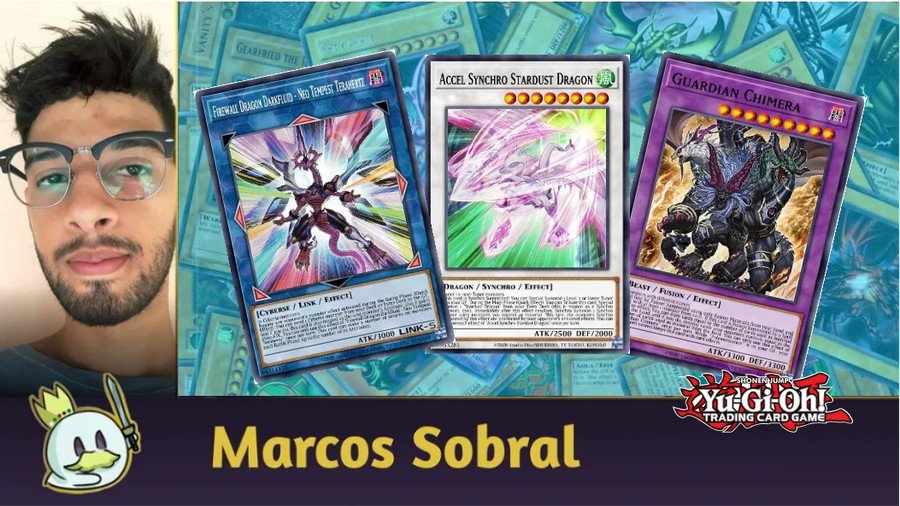Introduction
With the release of the new supports in Photon Hypernova, Kashtira went from just an engine to a complete deck.
Initially, it was believed that it would be the main counter against Tearlaments, but the new banlist resolved this situation by banning and limiting the archetype's main cards. Then, Kashtira established itself as the main deck of the format.
The archetype is focused on performing Rank 7 Xyz Summons as well as banishing cards. By banishing its own cards, they will hit their activation triggers or be retrieved by other cards of the archetype, and by banishing the opponent's, it will be wasting their resources.
In addition, the deck can block zones on the opponent's field so that they have no space available on the field to activate their cards.
Decklist
Main Deck
Kashtira Cards

Kashtira Unicorn is the deck's main starter and is the archetype's spell seeker. In addition, it also works as a strong interaction due to its effect of looking at the opponent's extra deck and banishing 1 of their monsters.

Kashtira Fenrir is your archetype monster seeker and is a key piece for you to perform your combo. Also, it's a strong interaction when you play second and helps you break fields, since you can banish any face-up card on your opponent's field face-down.
Due to its second effect, which is quite generic, this card is used as a tech in several decks to help break established fields and/or force interactions.

Kashtira Riseheart is your main extender and a critical card for your game plan, especially after taking some interaction. Additionally, its card banishing effect helps you hit the activation trigger of other cards.

Scareclaw Kashtira is more of an extender and although it's not a combo piece, it increases the ceiling of your plays if you reach it. Its biggest highlight is the fact that it can attack while in defense mode, which makes it an out for Number 41: Bagooska the Terribly Tired Tapir.

Kashtira Ogre is the Deck's Trap Seeker and also has an effect that allows you to discover the archetype your opponent is using by excavating 5 cards from the top of your Deck, and also banish 1 key card from among them.

Kashtiratheosis is a key card in our strategy, and your main way to set up a second monster. Also, when banished, it allows you to return 1 of your banished Kashtira cards to your hand.

Kashtira Birth is fundamental to the archetype and has multiple effects, all of which are quite relevant.
Normal Summoning Level 7 monsters is key to being able to play while you already have a monster on your field, and you can't Special Summon. Also, Special Summoning 1 of your Kashtira monsters who were banished or in the graveyard grants you a good follow-up, or a bigger game volume for putting another body on the board.
Plus, banishing 3 cards from your opponent's graveyard face-down if they activate a spell effect can be very strong depending on the deck you're facing, since most decks rely on cards in the graveyard to perform their plays.

Pressured Planet Wraitsoth is yet another absurd field spell in Yu-Gi-Oh! currently. In addition to functioning as a Kashtira monster seeker, it is an interaction if a Kashtira Shangri-Ira you control activates one of its effects.

Kashtira Big Bang is a "garnet" in the deck and its function is to be banished as the cost of the effect of Kashtira Riseheart, then you use its effect to remove a material from a Kashtira XYZ and continue with the combo.

Kashtira Preparations works both as a follow-up with its effect of Summoning Kashtira monsters banished or from your hand, and as an interaction, by banishing 1 card from your opponent's hand.
Staples and Tech Cards

Pot of Prosperity is essential in the deck as it provides an improvement in consistency. In addition, you can banish from your Extra Deck, monsters that will be used as Xyz Material later by Kashtira Arise-Heart.

Terraforming is yet another card to help with consistency, as it can fetch your field magic.

Ash Blossom & Joyous Spring needs no introduction and is here because it's probably the best tech in the format as it's effective against the meta's main decks. Also, it can negate the effect of the Book of Eclipse.

Infinite Impermanence has a place in the deck as it is the most versatile handtrap after "Ash", as it can be used from the hand on the opponent's turn or at the start of your turn as a board breaker.

Forbidden Lance is a tech that gained popularity due to the tendency to use “books” against Kashtira. It is primarily here to protect your Kashtira Shangri-Ira.

Book of Moon is very useful in the format and especially in the mirror match. Its strong point is that it can be used both when you play first and as a board breaker when you play second.

Book of Eclipse is at the top of the format because it's excellent against Kashtira and, despite dealing with the opponent's entire board at once, it's not very useful when you play first, as it also affects your monsters. Thus, its maximum value is reached when played as a board breaker.
Extra Deck
Kashtira Monsters

Kashtira Arise-Heart is the big boss of the deck and is quite overwhelming both for its quick effect of banishing 1 card on the field, and for its continuous effect of banishing any card sent to the Graveyard.
In addition, it can attach face-down banished cards as material, making it possible to target extra deck monsters banished by Pot of Prosperity, which can later activate effects if your opponent removes this card from the field.

Kashtira Shangri-Ira is responsible for blocking zones of the opponent's field, which can result in an “ftk” if the combo extends long enough. Additionally, you can Summon 1 Kashtira monster during each Standby Phase, which will serve as a follow-up or interaction.
Other Monsters

Number 89: Diablosis the Mind Hacker is a strong card, but it has only now found a deck to be used effectively. Just like Kashtira Unicorn, it allows you to banish 1 face-down monster from your opponent's Extra Deck, and it gets even stronger because it can also banish cards from your Graveyard and the top of your opponent's Deck.

Number 11: Big Eye is another simple and useful card, however, absurd in the mirror match. In other matchups, it's a good way to break fields.

Dark Armed, the Dragon of Annihilation is more of a utility card, in addition to dealing with a card in the opponent's control, it can banish a card in your own graveyard, which in this deck means follow-up or one more zone blocked.

Red-Eyes Flare Metal Dragon is that burn card used in game 3, when the game's time is almost over. A very hated strategy, but everyone is looking for a way to use it.

Divine Arsenal AA-ZEUS - Sky Thunder is considered by many to be the best xyz monster in the game, and is practically mandatory in decks focused on this summon since it is very useful in clearing fields.

Garura, Wings of Resonant Life is here to be banished by Pot of Prosperity and later attached by Kashtira Arise-Heart. Then, if your opponent manages to get your "Arise-Heart" off the field, "Garura" can activate its effect to draw 1 card when sent to the Graveyard.

Baronne de Fleur is your out for a possible Nibiru, the Primal Being. Despite not being done very frequently in this deck, it is always essential when it comes to the field.

Donner, Dagger Fur Hire is only here because it's a generic link which is a good out to deal with your opponent's Number 41: Bagooska the Terribly Tired Tapir. In addition to removing “Bagooska” from the field, it destroys itself together, which allows the field to be free for you to continue playing Kastira.
Kashtira's Gameplan
When playing this deck, your main objective is to build a field with Kashtira Shangri-Ira and Kashtira Arise-Heart. Depending on how good your hand was, you could have a Number 89: Diablosis the Mind Hacker or a Baronne de Fleur alongside them.
The number of zones on your opponent's field that you will block will also depend on your "luck" in opening with a hand where it will be possible to extend your play, another important factor is whether your opponent will respond to your effects with handtraps.
Completely blocking your opponent's field zones is not your only victory condition, but rather a resource to decrease your opponent's chances of winning, so it's critical to know which zones to block. If you're in a combo and haven't been handtrapped, you're probably facing a deck that uses board breakers, so the ideal would be to block your opponent's magic and trap zones to play around them.
Also, even when it is not possible to block a considerable amount of zones during your turn, you can do so during your opponent's turn, while they're trying to play.
I'll leave the default combo below if you only open it with Kashtira Unicorn:
>Special Summon Kashtira Unicorn via its own effect, then activate its other effect to add Kashtiratheosis from your Deck to your hand;
>Activate Kashtiratheosis by targeting Kashtira Unicorn, Special Summon Kashtira Fenrir from your Deck;
>Activate the effect of Kashtira Fenrir to add Kashtira Riseheart from your deck to your hand;
>Use Kashtira Unicorn and Kashtira Fenrir as material for Xyz Summoning Kashtira Shangri-Ira;
>Special Summon Kashtira Riseheart via its own effect, then activate its other effect on the field, banishing Kashtira Big Bang as a cost;
>After resolving the effect of Kashtira Riseheart, you can form a chain with the effects of Kashtira Shangri-Ira and Kashtira Big Bang;
>Remove a material from Kashtira Shangri-Ira by the effect of Kashtira Big Bang and put it in your hand, preferably Kashtira Fenrir, on resolution of the effect you summon it again and blocks 1 zone of your opponent's field;
>To finish off, Xyz Summon Kashtira Arise-Heart using only Kashtira Riseheart as material.
This will be your field:

Matchups Guide
Kashtira is a very oppressive deck which tends to be relentless when it goes first, but the success of your combo will depend on whether your opponent has handtraps to stop you, and if they don't have them, it will depend on whether they have board breakers to dismantle your field.
When going second, despite having an aggressive engine and the ability to break fields, the interactions that the opponent has to hold you back are also critical, since despite being a strong deck, Kashtira can be countered easily.
Branded Despia
The match against Branded Despia is usually decided by the coin, that is, the one who starts playing usually wins.
As seen in the YCS Las Vegas final, when it played first, Kashtira blocked 9 zones from Branded Despia, leaving only 1 monster zone, thus rendering board breakers like Book of Eclipse useless. The only card that could give Branded Despia a chance of winning would be a Nibiru, the Primal Being.
Going second, if you can't stop Branded Despia, in addition to taking the standard combo with fusions on the field, you can be blocked by Gimmick Puppet Nightmare or Ra's Disciple.
Labrynth
The match against Labrynth can be a bit unfavorable due to the techs that the deck uses, which are well oriented against Kashtira.
Going first, your objective is to block all the opponent's magic and trap zones, if you do, they lose the duel, unless they open with Lava Golem, The Winged Dragon of Ra - Sphere Mode or another out for your Kashtira Shangri-Ira that doesn't rely on blocked zones to be used. If you don't block all spell and trap zones, you can take a painful Evenly Matched.
When you go second, the advantage is clearly your opponent's, since Labrynth's standard “combo” consists of dropping 4 or 5 traps and passing the turn. That way, if they don't draw an awful combination of trap cards, they'll be able to block your plays. However, if they fail to hold you back, you can end the game quickly or at the very least establish a huge advantage.
Spright
The game against Spright is very dependent on the techs they have, and this time, instead of board breakers, your concern is usually with handtraps.
By going first, due to the high number of handtraps that the deck runs, you will hardly manage to go for a full combo, so to win the best option would be to make a more basic field to block zones and remove key cards as they attempt to play in the next turn. Also, Nibiru, the Primal Being is always a concern.
Going second, things are a little more difficult, as in addition to worrying about handtraps, you need to get through the field that Spright has set up. Although it's not a field with a high ceiling, it might be enough to stop you. However, if you can force the opponent's interactions well, you can go through the field they made and win the duel.
Conclusion
I hope you enjoyed learning more about the deck and that you have a lot of fun with it.
You are welcome to give your opinion here in the comments, Cards Realm appreciates your collaboration!















— Comentarios 0
, Reacciones 1
Se el primero en comentar